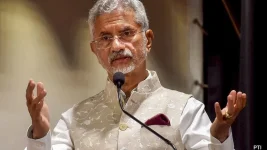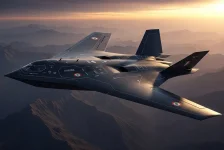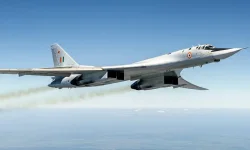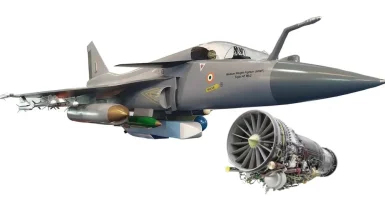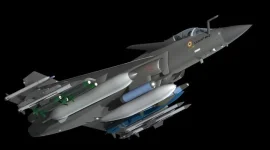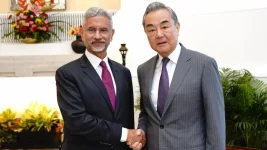- Views: 5K
- Replies: 38
India's Tejas Mk2 programme, a crucial step in modernising the nation's air power, is fundamentally linked to its choice of the American General Electric (GE) F414 engine.
While discussions occasionally arise about alternative powerplants like the Eurojet EJ200 or the French Safran M88, experts indicate that switching engines at this stage would be a complex, costly, and time-consuming process that could severely delay the fighter jet's deployment.
The Tejas Mk2 is being developed as a 4.5-generation multirole combat aircraft, designed to replace the Indian Air Force's (IAF) ageing fleets of Jaguar, Mirage-2000, and MiG-29 aircraft.
As a significant upgrade over the Tejas Mk1A, the Mk2 variant is designed for superior performance, featuring advanced avionics, an indigenous Uttam AESA radar, and a greater weapons payload.
At the heart of this enhanced capability is the GE F414-INS6 engine, which provides 98 kilonewtons (kN) of thrust, a substantial increase from the 84 kN of the F404 engine used in the Tejas Mk1A. This extra power is essential for the aircraft to achieve better agility, speed, and combat effectiveness.
The airframe of the Tejas Mk2 has been meticulously engineered around the specific dimensions, weight, and performance characteristics of the F414 engine.
Key components, including the air intakes, fuselage structure, engine mounts, and internal cooling systems, are all optimised for this particular engine.
This deep integration ensures the aircraft's aerodynamic stability, structural strength, and overall reliability.
Consequently, the Tejas Mk2's design is highly dependent on the F414, making any change a formidable engineering challenge.
Introducing a different engine, such as the Eurojet EJ200 (which powers the Eurofighter Typhoon) or the Safran M88 (from the Dassault Rafale), would require a complete redesign of the aircraft.
Despite the EJ200 offering a comparable thrust of 90 kN, its physical size, weight, and airflow requirements are different from the F414.
Adapting the Tejas Mk2 would involve re-engineering its core structure, from the air intakes to the tail section, and recalibrating its centre of gravity.
This process would effectively create a new aircraft variant, which would need to undergo a full cycle of development, testing, and certification, potentially delaying the programme by several years from its planned 2031 induction.
The decision to proceed with the GE F414 is reinforced by significant strategic and industrial factors.
In a landmark agreement finalised in June 2023 during Prime Minister Narendra Modi's state visit to the US, GE and Hindustan Aeronautics Limited (HAL) signed a pact to jointly manufacture the F414 engines in India.
This deal includes an unprecedented 80% transfer of technology (ToT), a major boost for India’s goal of self-reliance in defence manufacturing under the 'Make in India' initiative. This agreement ensures a secure supply chain and builds critical aerospace expertise within the country.
Opting for a European engine would nullify this progress and present major logistical hurdles. A new deal would have to be negotiated with a different consortium, and it is uncertain if it would include a similar level of technology transfer.
Furthermore, the IAF's maintenance crews are already familiar with GE engines through the F404 used in the Tejas Mk1A fleet. Introducing a completely different engine family would require new supply chains, separate maintenance infrastructure, and extensive retraining of ground personnel, adding complexity and operational costs.
The Tejas Mk2 programme is operating on a strict timeline, with the first flight anticipated by 2027 and production scheduled to commence by 2031.
HAL plans to manufacture over 200 of these jets for the IAF. Any delay caused by an engine redesign would push the delivery of these much-needed aircraft beyond 2035.
This could worsen the IAF's current shortfall of fighter squadrons, which stands at around 31 against a sanctioned strength of 42, at a time when rapid modernisation is essential to address regional security challenges.
Ultimately, remaining with the GE F414 engine provides a clear and stable path for the Tejas Mk2 programme. The established partnership with GE not only secures the engine supply but also supports India’s domestic defence industry.
This synergy extends to future projects, as a more powerful variant of the F414 is also being considered for India’s futuristic fifth-generation Advanced Medium Combat Aircraft (AMCA).
This consistency helps streamline development, production, and maintenance for India's next generation of fighter jets.

